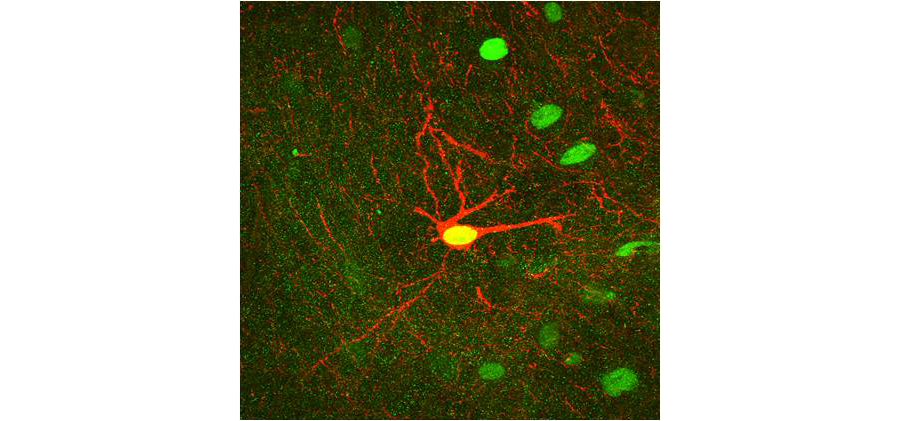The Leon Reijmers Lab
Understanding How Memories are Stored
The lab studies how a neuronal network can store a memory. Transgenic mice are used to tag neurons that are activated during memory encoding. The tag can be used to image, analyze and manipulate these neurons. Imaging tagged neurons in various brain regions provides important information on how circuits of neurons support memory storage and erasure. Tagged neurons can be analyzed for changes in gene expression, thereby elucidating molecular mechanisms of memory storage. Selective manipulation of tagged neurons can be used to control behavioral expression of a memory.
Figure 1. Neurons in the hippocampus that store a memory are genetically tagged and express tau-LacZ (red). Activation of these memory neurons is detected by imaging the expression of activity regulated proteins.
One of the transgenic mice used in the lab is called the TetTag mouse. TetTag stands for “Tet”racycline controlled “Tag”ging of activated neurons. The mouse can translate the transient activation of the c-fos promoter sequence during memory encoding into long-lasting expression of a reporter gene. After behavioral analysis in a memory test, neurons activated during memory formation can be visualized using immunohistochemistry. The first study with the TetTag mouse localized neurons in the amygdala that encode a fear memory (Reijmers et al, 2007).
Figure 2. A neuron in the amygdala expresses tau-LacZ (red) and the activity regulated protein zif (yellow). Expression of both markers indicates that this neuron was activated during memory storage and retrieval.
The TetTag mouse expresses tau-LacZ in tagged neurons. Tau-LacZ fills the axons, which allows us to image the connections between tagged neurons. This enables the reconstruction of a memory circuit that is distributed over multiple brain regions. We are also using the TetTag mouse to detect dynamic changes in gene expression within neurons that are recruited to encode a memory. The chance of detecting these changes is significantly increased by using the TetTag mouse, because it enables the selective analysis of neurons defined by function instead of spatial proximity.
Our goal is to understand how memories are stored by the combined studies of molecules, neurons, circuits, and behavior.


